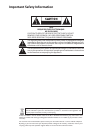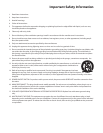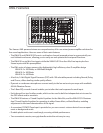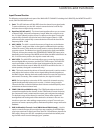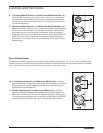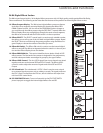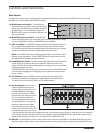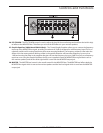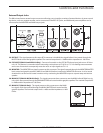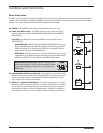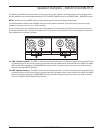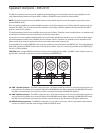
XML POWERED MIXERS
8
Controls and Functions
2
1
3
4
5
6
7
8
9
8. 1/4” Inputs (XML410 Channels 1–6; XML610 and XML910 Channels 1–4)
- Balanced TRS phone line input (T: hot, R: cold, S: ground). You can connect
a microphone or line level source to this input. Accepts both balanced and
unbalanced line inputs. You cannot use the 1/4” and XLR inputs on the same
channel simultaneously.
9. XLR Inputs (XML410 Channels 1–6; XML610 and XML910 Channels 1–4) -
Balanced XLR input (1: ground, 2: hot, 3: cold). You can connect a microphone
or line level source to this input. The XLR inputs also feature +48V phantom
power, allowing you to use condenser microphones. When switching the
PHANTOM power switch to the ON position, be sure to turn the MASTER and
MONITOR controls fully counterclockwise to avoid any loud pops through
your speakers. You cannot use the 1/4” and XLR inputs on the same channel
simultaneously.
10
11
Stereo Channel Inputs
The XML610 and XML910 feature four stereo input strips, which include channels 5/6, 7/8, 9/10 and 11/12. While these
channels look very much like the mono channels, they have two inputs so they can accept a stereo signal. As an added
bonus, these inputs also include a microphone input, which can be used in mono.
10. 1/4” LINE Inputs Channels 5–12 (XML610 and XML910 only) - Use these
pairs of unbalanced 1/4” inputs for connecting stereo line level sources. When
connecting only to the LINE L/MONO input, the input signal will be sent at
equal levels to Left and Right mix.
11. XLR MIC Input Channels 5-12 (XML610 and XML910 only) - Use these
inputs to connect Low Impedance microphones and low-level signals from
direct boxes. The MIC inputs also feature +48V phantom power, allowing you
to use condenser microphones. You can use the 1/4” LINE inputs and XLR MIC
inputs simultaneously, but the VOL control will adjust all inputs together.




